Understanding Smart Autism: A New Perspective on Therapeutic Approaches
Autism Spectrum Disorder (ASD) requires a nuanced and evidence-based approach to therapy, one that respects the individuality of each person while employing proven methods to support their development. This article explores 'Smart Autism'—the application of scientifically supported, personalized interventions that enhance the quality of life for autistic individuals and emphasize their strengths and potential. We delve into behavioral therapies, multidisciplinary supports, and innovative educational frameworks shaping modern autism care.
Defining Applied Behavior Analysis (ABA) Therapy in Autism Care
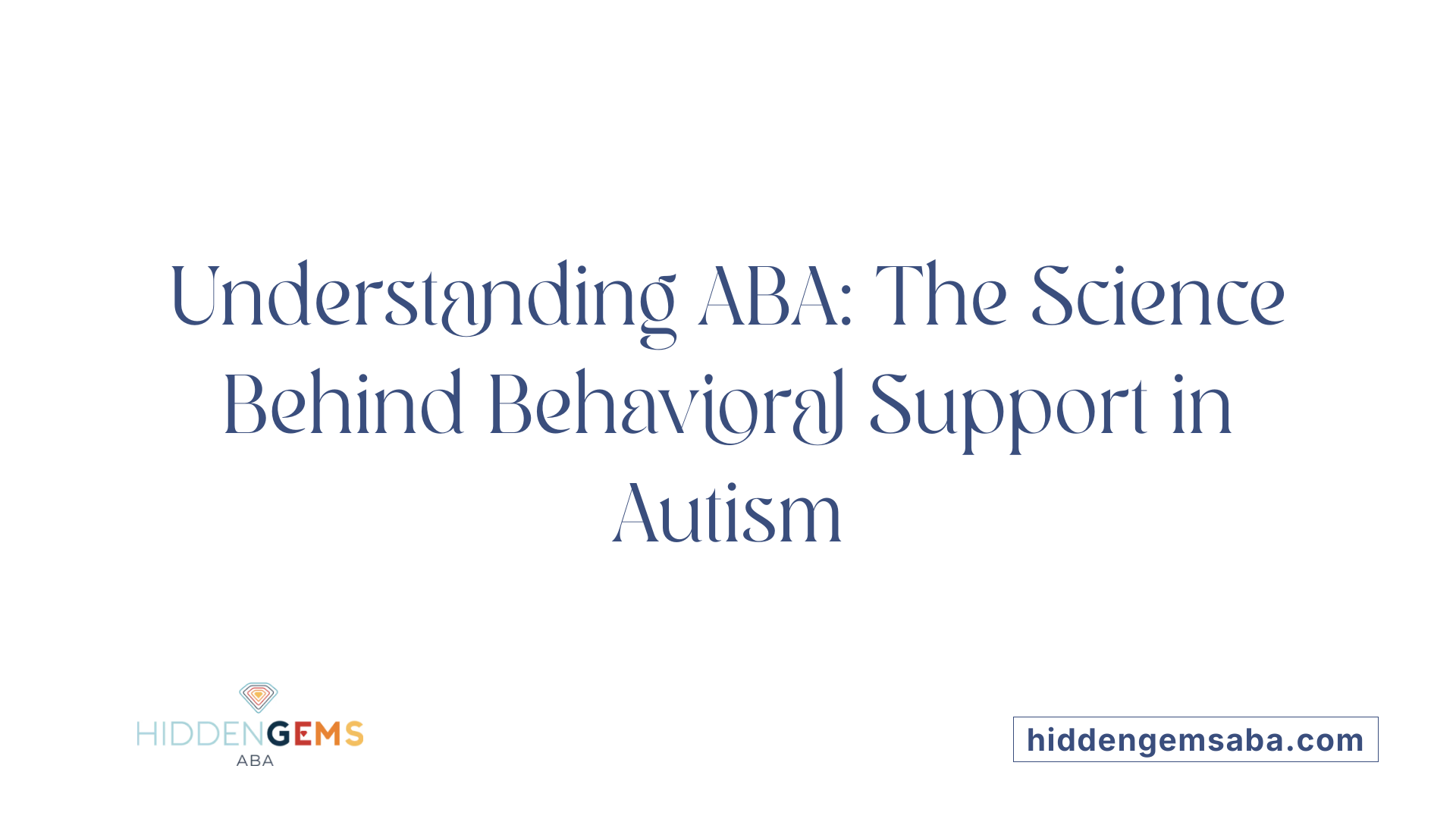
What is Applied Behavior Analysis (ABA) therapy and how is it used for autism?
Applied Behavior Analysis (ABA) therapy is a science-driven approach focused on understanding and influencing behavior to support individuals with autism spectrum disorder (ASD). Through careful analysis of the environment, ABA aims to increase positive behaviors and reduce challenging ones by using positive reinforcement techniques.
ABA therapy principles
ABA centers on teaching new skills and improving social interactions by rewarding desired behaviors. It is based on evidence that repetitive, focused interventions can lead to significant developmental gains, especially when started early in childhood (typically before age 4) and delivered intensively (over 20 hours per week).
Techniques used in ABA
Several specific teaching strategies are employed within ABA, including:
- Discrete Trial Training (DTT): Structured, one-on-one sessions with step-by-step instructions and rewards.
- Pivotal Response Treatment (PRT): A naturalistic approach using play and child interests, targeting core skills such as communication initiation.
- Early Start Denver Model (ESDM): A play-based method combining developmental and behavioral strategies to address multiple goals simultaneously.
Settings for ABA delivery
ABA therapy is flexible and can be administered at home, in school settings, or community environments. This adaptability helps integrate learned behaviors into everyday situations.
Individualization in ABA
Care plans are personalized by Board Certified Behavior Analysts (BCBAs) following comprehensive assessments. Treatment focuses on individual strengths and challenges, ensuring goals are meaningful and relevant.
Effectiveness and evidence base
Numerous studies confirm ABA's effectiveness in enhancing socialization, communication, and language skills among people with autism. Its evidence-backed methodologies have made it a widely accepted best practice, supported by major health organizations.
ABA therapy is not without misconceptions. It is not about normalization or punishment but about fostering meaningful, positive behavioral changes respectful of each person's uniqueness. Positive reinforcement replaces outdated practices, promoting engagement and independence.
| Aspect | Description | Notes |
|---|---|---|
| Principles | Positive reinforcement, behavior modification | Focus on meaningful skill-building |
| Techniques | DTT, PRT, ESDM | Combines structured and naturalistic approaches |
| Delivery Settings | Home, school, community | Flexible to individual needs |
| Individualization | Assessment-driven, BCBA-created plans | Tailored to strengths and challenges |
| Evidence and Outcomes | Proven gains in communication and social skills | Supported by extensive research |
Who Provides Behavioral Therapy Services for Autism?

Types of Professionals Providing ABA
Behavioral therapy services for autism are mainly delivered by professionals trained in Applied Behavior Analysis (ABA). These include Board Certified Behavior Analysts (BCBAs), Board Certified Assistant Behavior Analysts, Registered Behavior Technicians, and other developmental specialists. These practitioners design and implement individualized treatment plans to encourage positive behaviors and reduce challenges.
Settings of ABA Service Delivery
ABA therapy can be provided in a variety of settings including specialized clinics, the home environment, schools, and community spaces. This flexibility helps tailor interventions to the unique needs of each individual, promoting skill development in natural and supportive settings.
Integration with Other Therapies
Organizations providing behavioral therapy often integrate ABA with complementary services such as speech and language therapy and occupational therapy. This multidisciplinary approach addresses communication, social interaction, and daily living skills, offering comprehensive support to individuals with autism.
Early Intervention Importance
Professional guidance stresses early intervention, typically starting before the age of 4, as it significantly improves developmental outcomes. Early, intensive ABA therapy combined with other supports can lead to sizable gains in socialization, communication, and independence, ultimately reducing the need for more extensive support later in life.
The Key Benefits of Behavioral Therapy for Individuals with Autism
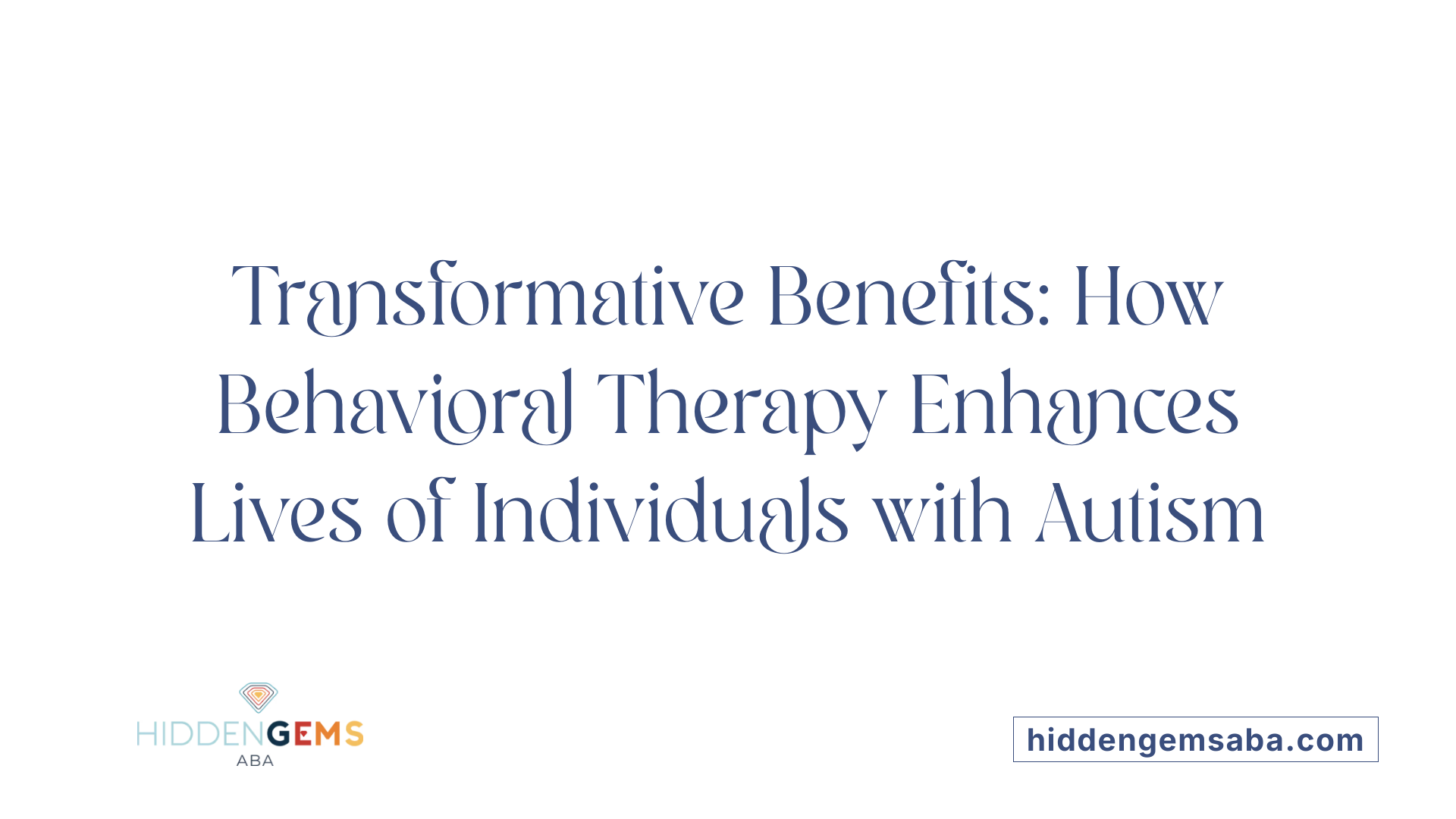
What are the key benefits of behavioral therapy for individuals with autism?
Behavioral therapy, with applied behavior analysis (ABA) at its core, is highly effective for supporting individuals with autism spectrum disorder (ASD). This therapy focuses on skill development by increasing positive behaviors and reducing challenging ones. ABA uses positive reinforcement strategies to encourage meaningful behaviors rather than relying on punishment.
ABA promotes improvements in communication and socialization by teaching essential skills through methods like Discrete Trial Training (DTT), which is structured and reward-based, and Pivotal Response Training (PRT), which occurs in natural settings using the child's interests.
Early intervention, particularly before age 4, significantly enhances outcomes. Intensive ABA treatments can boost expressive language, social engagement, and adaptive behaviors, reducing the need for extensive special services later.
Emotional regulation is another important benefit. Behavioral therapy assists individuals in managing anxiety and other emotional challenges by teaching connections between thoughts, feelings, and behaviors. Overall, ABA supports independence by improving daily living skills and fostering social competence.
In summary, behavioral therapy delivers personalized, evidence-backed care that aids communication, emotional health, and life skills, enhancing the quality of life for individuals with autism.
Diverse Therapeutic Modalities Complementing ABA in Autism Treatment
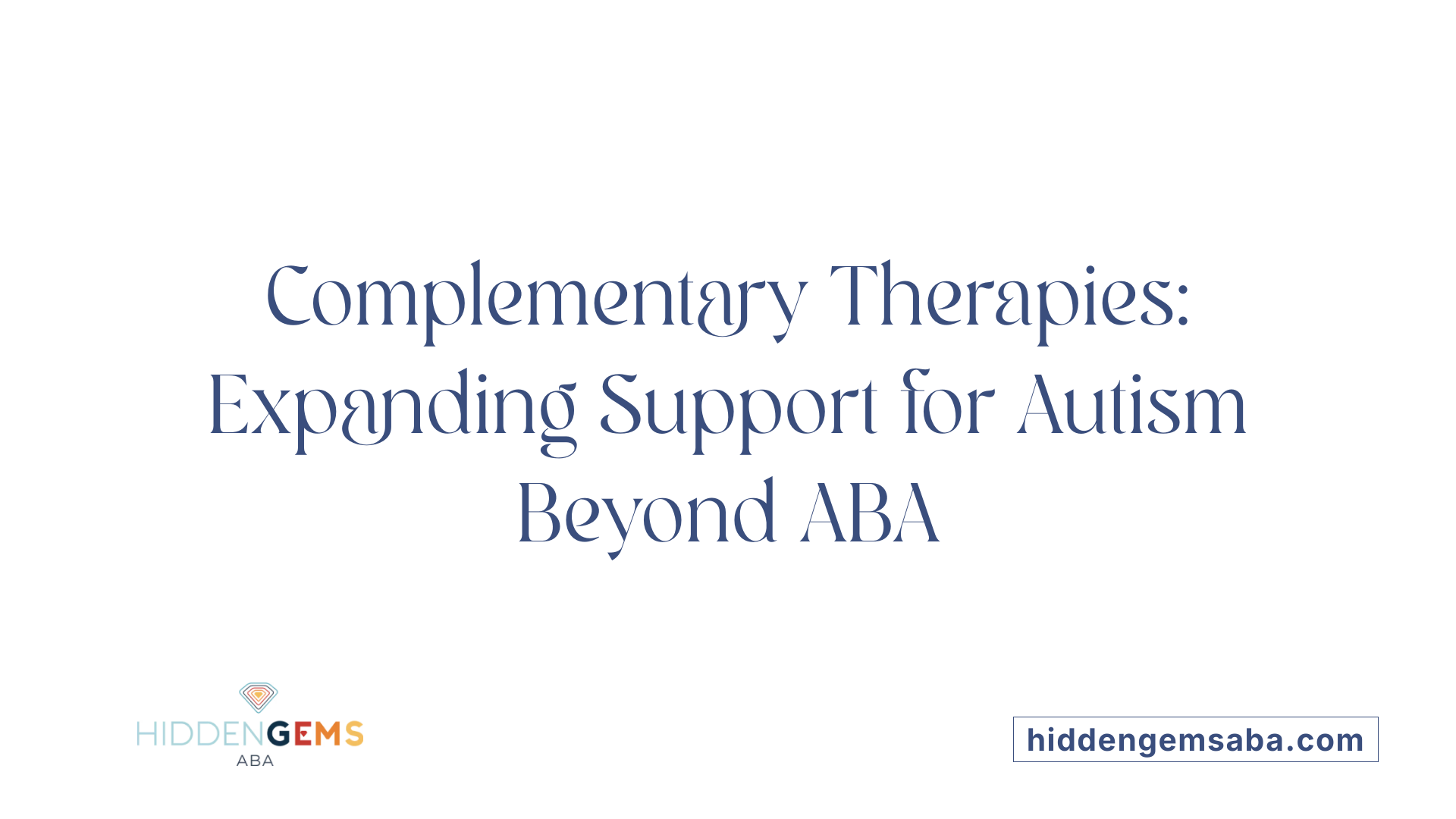
What is Speech and Language Therapy in Autism Treatment?
Speech and language therapy is aimed at enhancing communication skills in individuals with autism spectrum disorder (ASD). This includes improving verbal and non-verbal communication as well as social interaction. Therapies may involve the use of sign language or voice-output devices, especially helpful for minimally verbal individuals. Its focus is to empower individuals to express themselves more effectively.
How Does Occupational Therapy Support Individuals with ASD?
Occupational therapy helps individuals develop essential skills for daily living. This includes improving fine motor skills, sensory processing, and promoting independence in activities such as dressing, eating, and bathing. While beneficial across all ages, earlier intervention generally yields better outcomes. It often integrates sensory integration techniques to help manage sensory overloads common in autism.
What Role Does Sensory Integration Therapy Play?
Sensory integration therapy, often provided as part of occupational therapy, focuses on helping children adjust their responses to sensory stimuli. This therapy supports improvements in motor skills, social interaction, and day-to-day functioning, particularly in children aged 3 to 12. It helps individuals better regulate their sensory inputs to reduce distress and enhance learning.
How Is Cognitive Behavioral Therapy (CBT) Used with Autistic Individuals?
CBT addresses emotional challenges such as anxiety and depression common in ASD. By helping clients recognize connections between thoughts, feelings, and behaviors, CBT facilitates healthier emotional responses and coping mechanisms. This psychological approach supports overall mental health alongside developmental therapies.
What Are Social-Relational Interventions and Their Benefits?
Social-relational interventions aim to improve social skills and emotional bonds. They use models like DIR/Floor Time, Relationship Development Intervention (RDI), social stories, and social skills groups. These approaches nurture meaningful social engagement, emotional understanding, and communication, complementing behavioral and developmental therapies like ABA.
These diverse therapies work alongside Applied Behavior Analysis (ABA) to offer a comprehensive treatment plan that addresses the many facets of autism, from communication and daily living skills to emotional well-being and social relationships.
Innovative Educational and Developmental Approaches Enhancing Autism Support
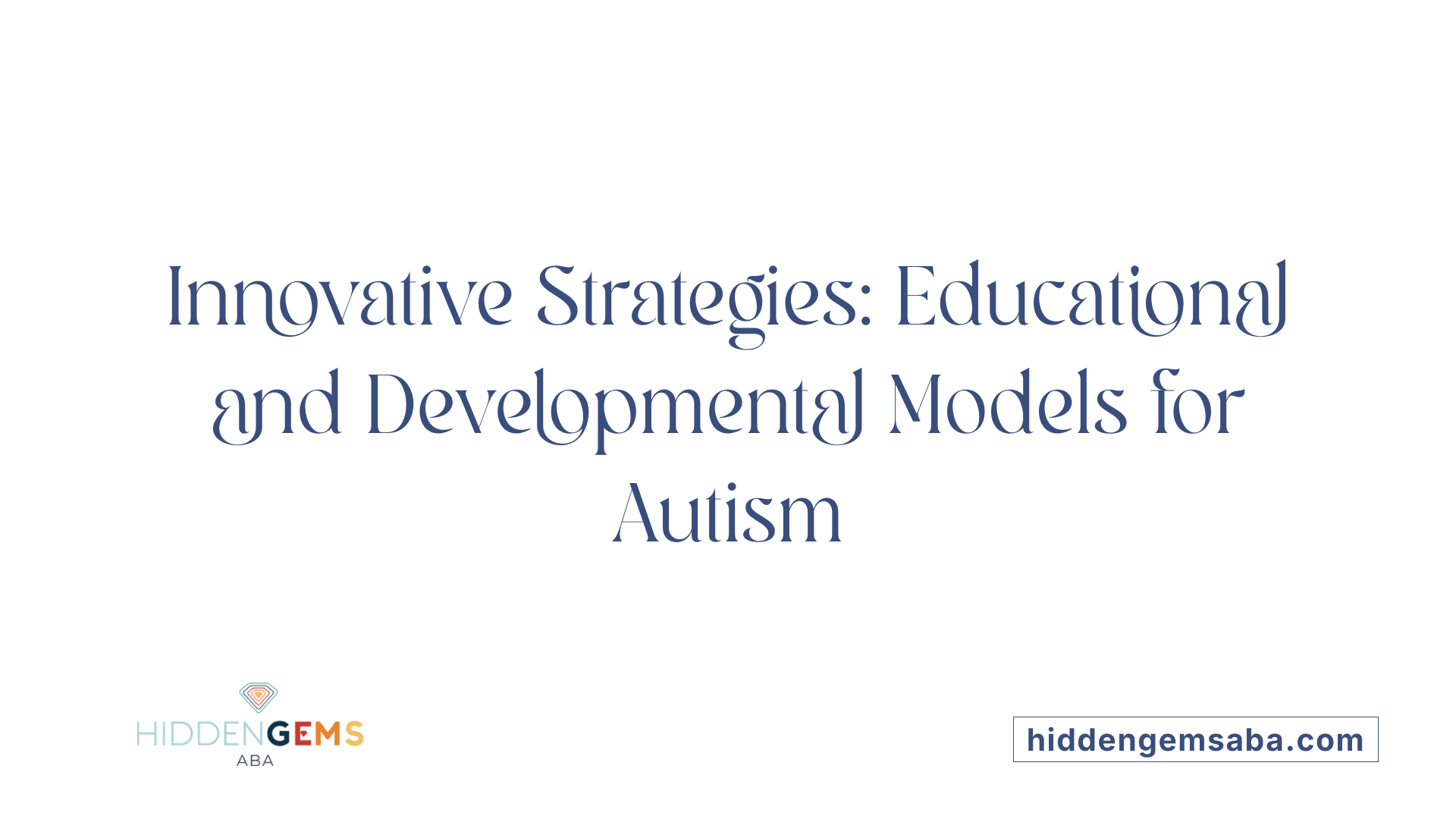
What are educational interventions tailored for ASD?
Educational interventions for autism spectrum disorder (ASD) are specially designed programs implemented in school settings to support academic success and foster social and independence skills. These interventions start as early as toddler age and continue into early adulthood. They focus on each child's unique strengths and needs, aiming to create a supportive learning environment that helps students thrive both academically and socially.
How does the Early Start Denver Model (ESDM) support young children?
The Early Start Denver Model (ESDM) is a developmental treatment approach for very young children with ASD, typically between 12 and 48 months old. ESDM blends play-based activities with applied behavior analysis (ABA) techniques to improve language, social, and cognitive skills. It targets multiple developmental goals simultaneously, emphasizing natural interactions and engagement, making learning enjoyable and effective for toddlers.
What roles do Discrete Trial Training (DTT) and Pivotal Response Training (PRT) play in ASD therapy?
Discrete Trial Training (DTT) is a highly structured ABA method focusing on breaking skills into small, manageable steps taught through one-on-one sessions with clear instructions and rewards. It is designed to build specific skills methodically.
Pivotal Response Training (PRT), by contrast, is more naturalistic and less structured. It uses the child's interests and play to encourage critical skills like initiating communication and social interaction. PRT aims to promote generalized learning in everyday environments.
What is the TEACCH program and how does it benefit students with ASD?
TEACCH provides a structured classroom environment tailored to the needs of individuals with autism. It emphasizes consistency, visual learning, and organization to reduce anxiety and increase understanding. By adapting the environment and teaching style, TEACCH helps students better engage with their education and improve functional independence.
| Intervention | Age Range | Key Features | Primary Focus |
|---|---|---|---|
| Educational Interventions | Toddler to Adulthood | Tailored plans based on strengths and needs | Academic, social, independence |
| Early Start Denver Model | 12–48 months | Play-based ABA integration, multiple simultaneous goals | Language, social, cognitive |
| Discrete Trial Training | Varies | Structured, step-by-step skill building, rewards | Specific skill acquisition |
| Pivotal Response Training | Varies | Natural setting, child-led, focuses on pivotal skills | Communication, social skills |
| TEACCH | School age | Structured classrooms, visual learning, organized settings | Engagement, functional skills |
Comprehensive and Individualized Treatment Planning in Smart Autism
Why are multidisciplinary approaches essential in autism treatment?
Effective treatment for autism spectrum disorder (ASD) relies on a multidisciplinary approach. This means combining therapies such as applied behavior analysis (ABA), speech and language therapy, occupational therapy, cognitive behavioral therapy (CBT), and educational interventions. Each discipline addresses distinct developmental challenges, ensuring a broad spectrum of needs—from communication to emotional health—is met. Coordination among professionals fosters a unified treatment experience that maximizes overall benefits.
How are assessments and goal-setting integrated into treatment plans?
A thorough initial assessment by qualified specialists, such as Board Certified Behavior Analysts (BCBAs), educators, and therapists, forms the backbone of any good plan. These assessments identify developmental challenges and strengths, setting the stage for personalized interventions. From here, teams develop specific, measurable, achievable, relevant, and time-bound (SMART) goals to track progress effectively. This practice ensures focus and clarity, allowing for continuous adjustments based on the individual's evolving needs.
What role do SMART goals play in managing ASD therapy?
SMART goals translate broad treatment objectives into actionable steps. For example, rather than a general aim like "improve communication," a SMART goal might be "increase use of eye contact during social interactions from 2 to 5 times per day within 4 weeks." This framework facilitates systematic progress monitoring and outcome evaluation, supporting data-driven decisions about therapy intensity and methods.
Why is it important to incorporate individual strengths and interests?
Personalizing interventions to align with the child's interests and abilities enhances motivation and engagement. Whether its using favorite toys during ABA sessions or incorporating preferred activities into occupational therapy, leveraging strengths encourages active participation. This not only makes learning enjoyable but also fosters skill generalization beyond clinical settings.
How is care coordinated among different providers?
Tight coordination among the multidisciplinary team is vital. Regular communication and shared documentation prevent overlapping efforts and ensure cohesive strategies. Parents and caregivers are integral members of this network, providing vital insights and reinforcing skills practiced during therapy at home. This cooperative model delivers a comprehensive support system, helping the child reach their fullest potential.
Addressing Misconceptions and the Role of Complementary Treatments in Autism Care
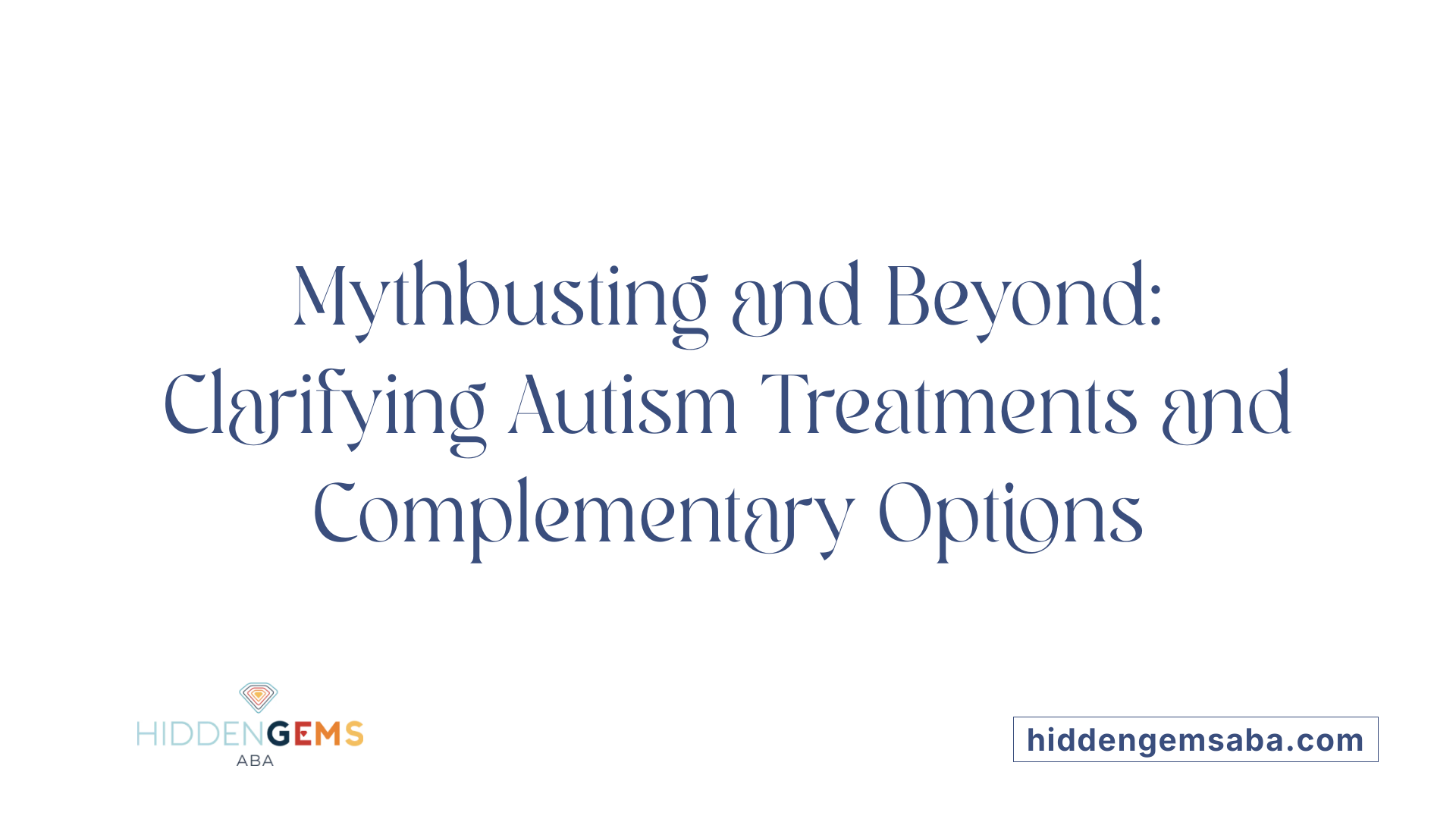
What are common misconceptions about Applied Behavior Analysis (ABA)?
ABA is sometimes misunderstood as a method that "normalizes" autistic individuals or uses outdated animal training techniques. In reality, ABA focuses on positive reinforcement to encourage meaningful behavior changes that improve quality of life. It does not rely on punishment or bribery but uses rewards thoughtfully to promote helpful skills and social interactions.
How are medications used in managing autism spectrum disorder (ASD)?
There are no medications to treat the core symptoms of ASD itself. However, medications may be prescribed to manage co-occurring conditions such as anxiety, depression, seizures, problems with focus and energy, sleep disturbances, or gastrointestinal issues. This approach helps improve overall well-being but does not replace behavioral and developmental therapies.
What complementary and alternative treatments are available for individuals with ASD?
Besides traditional therapies, many families explore complementary treatments such as specialized diets, nutritional supplements, animal-assisted therapy, mindfulness practices, and relaxation techniques. While some individuals may find these helpful, it is essential that these methods are used under professional supervision to ensure safety and effectiveness.
Why is professional guidance and evidence-based practice important in autism treatment?
Autism treatment should be guided by comprehensive evaluations and individualized plans created by certified professionals. Evidence-based practices like ABA, speech therapy, and occupational therapy have proven benefits and structured protocols for progress measurement. Complementary treatments must be discussed with healthcare providers to avoid interventions that lack scientific support or that might interfere with established therapies.
| Aspect | Description | Importance |
|---|---|---|
| ABA Misconceptions | Misunderstood as punishment or normalization | Clarifies that ABA uses positive reinforcement for meaningful change |
| Use of Medication | Targets co-occurring symptoms, not core ASD features | Manages health and behavior challenges alongside therapies |
| Complementary Treatments | Includes diets, animal therapy, mindfulness | Should be integrated safely with medical advice |
| Professional Guidance | Involves certified experts using proven methods | Ensures treatment is effective, safe, and personalized |
The Path Forward: Embracing Smart, Evidence-Based Autism Care
Modern autism treatment, under the banner of 'Smart Autism,' integrates evidence-based behavioral therapies like ABA with complementary developmental, educational, and psychological supports. This approach prioritizes individualized care, early intervention, and respect for neurodiversity, fostering meaningful growth in communication, socialization, independence, and emotional wellbeing. By dispelling myths and emphasizing coordinated multidisciplinary care, families and professionals can navigate autism treatment confidently and effectively, unlocking the potential within every autistic individual.
References
- Therapy methods for autism | ASD treatment plan
- Treatment and Intervention for Autism Spectrum Disorder
- Applied Behavior Analysis (ABA)
- Behavioral Management Therapy for Autism | NICHD
- 6 Benefits of ABA Therapy for Children with Autism
- Applied Behavior Analysis (ABA)
- Treatment and Intervention for Autism Spectrum Disorder
- Applied Behavior Analysis (ABA)
- Applied Behavior Analysis (ABA)
- The Controversy Around ABA






